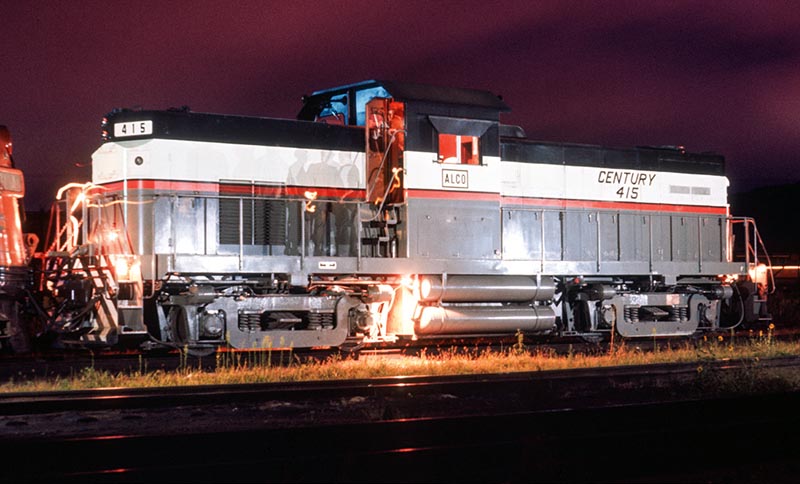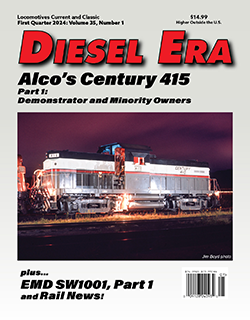Struggling diesel builder Alco introduced its Century series in early 1963. Alco, like General Motors’ Electro-Motive Division (EMD), found itself surprised by General Electric’s (GE) U25B debut and the innovations and horsepower it delivered. Alco abandoned its RS-series (the RS-27 was making attempts to attract buyers at the time of the U25’s arrival), and answered GE’s Universal Series with its own Century Series (C-420, C-424, and never-produced C-624 were the initial models shown to the public).
Looking for sales in the diesel road switcher category (at the time only being marketed to by EMD), Alco introduced its C-415 (officially model DL-415) and a never-produced 1,000-hp DL-410 in mid-1966 countering at the same time EMD presented its SW1500/SW1000 models. Alco’s line in the 1960s included at least one non-Century offering, the T-6 end-cab switcher; Monongahela Connecting bought a T-6 at the same time it purchased its unique low-cab C-415 in 1968. The four-axle 1,500-hp unit was promoted by the diesel builder as a “versatile diesel-electric utility locomotive,” with a trio of cab heights cataloged to provide options for visibility and clearance needs. In his 1990 article in Diesel Era’s second edition, Warren Calloway stated Alco’s C-415 “was a locomotive built at the wrong time” with “radical concepts” and “design problems.”
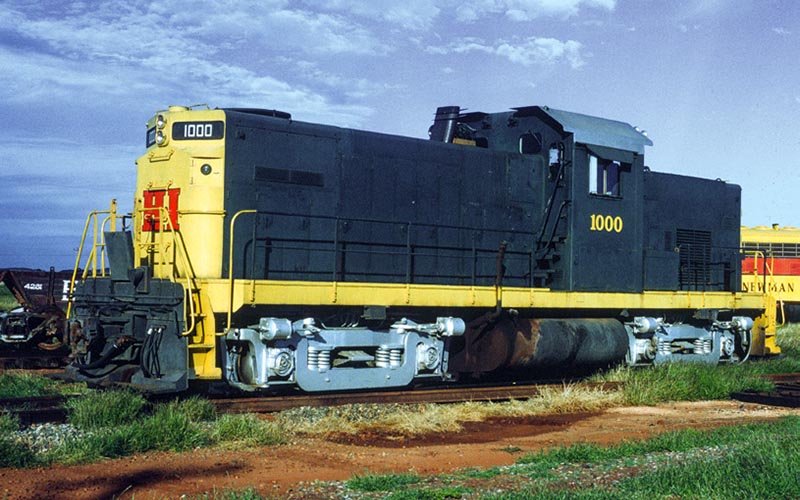
ABOVE: Hamersley Iron (H-I) 1000 pos-sesses uncommon hood features as it began as Alco’s C-415 demonstrator. The unit is pictured in Hamersley Iron livery in 1989. H-I originally numbered this C-415 as its 008. According to research in Warren Calloway’s 1993 Diesel Era article, this C-415 attempted to garner orders from several Class 1 railroads in the U.S. (including Louis-ville & Nashville, The Milwaukee Road, Norfolk & Western, and Western Pacific) before finding a buyer in Australia in June 1968. For H-I, this C-415 report-edly worked ballast trains and shunted cars in the road’s Seven Mile Yard. This unit was retired in early 1982 and donated to Pilbara Railway Historical Society (prhs.org) in Western Australia. Research indicates it operated special movements for the society and in 1991 pulled construction trains providing materials for building Hamersley Iron’s Marandoo Line in far Western Australia. —John C. Benson photo, Kevin EuDaly collection
Alco’s RS-series was innovating with its short hood/cab/long hood design, and the RS-1 and other road switchers of this series established a popular standard. This success would not repeat for the center-cab platform selected for Alco’s C-415. While Alco’s 251 prime mover is a known commodity to railfans, the C-415 employed a V8 version that had previously only served in non-railroad applications (U.S. Navy Landing Ship Tank and power for portable generators). This version of the 251 was smaller, but not of a size to allow for the cab to reside exactly center on the 46-foot, 6-inch frame. The unit’s short hood housed the radiator and the long hood was home to the prime mover.
Alco’s demonstrator, numbered 415, was built in April 1966, and became the first of 26 C-415s constructed before production ended in late 1968. This initial C-415 is unique among the collection with attributes not reproduced for regular production models. Most notably, the short hood roof includes a round radiator fan opening, while the 25 C-415s that followed would have the open grille arrangement similar to the appearance of other Alco Century models. This demonstrator C-415 includes its air tanks stacked together on one side of the unit with a rounded fuel tank seen on the opposite side…
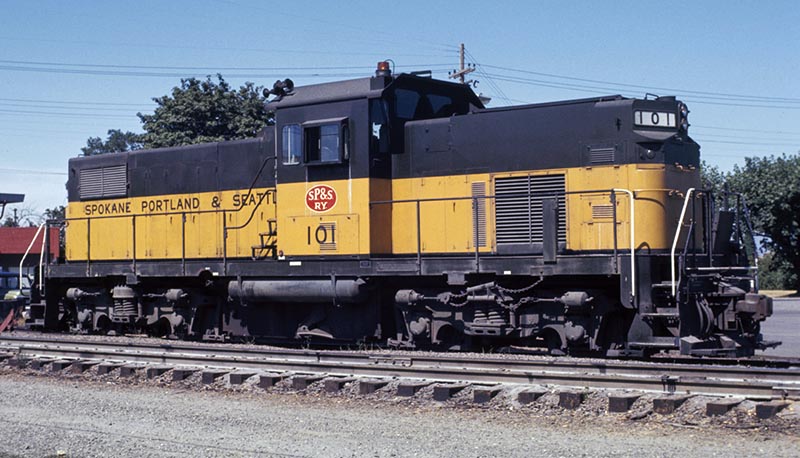
ABOVE: Spokane, Portland & Seattle 101 at Eugene, Ore., on July 20, 1970. Note the builder and trust plates on the sill near the cab. Though SP&S only owned two C-415s, the railroad planned for more, with four units on order as Alco shut down operations. —Photographer unknown, Dan Dover collection,courtesy Dale Sanders
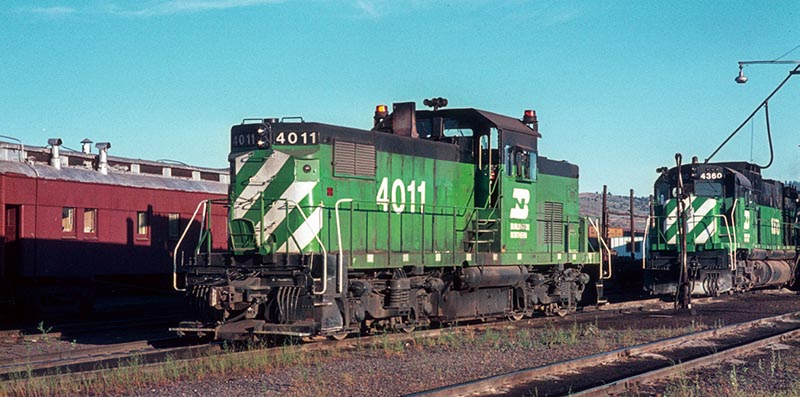
ABOVE: Burlington Northern looks like an Alco road in this 1973 view at Klamath Falls, Ore., with BN C-636 4360, built as SP&S 330 (3488-01) in early 1968, and 4011 sharing this scene. —Peter Arnold photo, Kevin EuDaly collection


